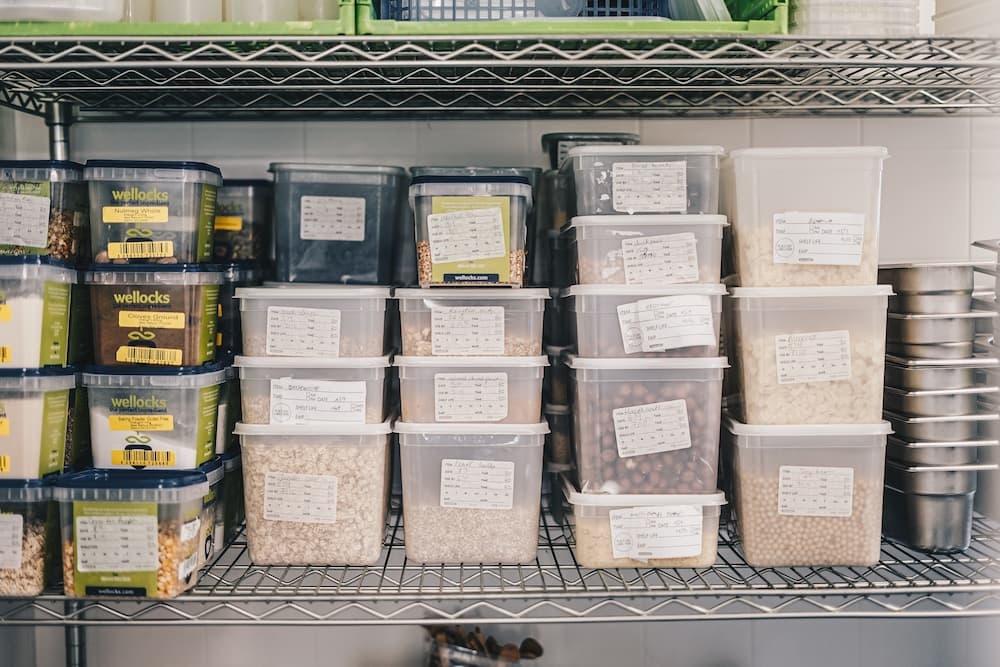Essential Guide to Industrial Kitchen Equipment for Ghost Kitchens
Table of Contents
CloudKitchens
How many tacos can be delivered from a 1000sqft restaurant?
The same amount as a 200sqft ghost kitchen.
Industrial kitchen equipment is at the heart of every ghost kitchen, allowing operators to produce high-quality food quickly and efficiently to meet the high demand of delivery orders or attending at the restaurant.
Unlike residential kitchen equipment, industrial kitchen appliances are built for high-volume cooking and continuous use, making them essential for the fast-paced, high-output environment of a ghost kitchen.
Whether you’re looking to expand your delivery offerings or start a ghost kitchen from scratch, understanding the right equipment choices is essential to maximize productivity and ensure food safety standards.
What is industrial kitchen equipment?
Industrial kitchen equipment refers to high-performance appliances designed specifically for commercial food service. Unlike household appliances, industrial-grade equipment is manufactured with durability, high capacity, and efficiency in mind, making it suitable for high-output environments like ghost kitchens.
These appliances, which include ovens, refrigerators, stoves, fryers, and dishwashers, are built to run continuously and handle the demands of fast-paced service environments.
By investing in industrial kitchen equipment, ghost kitchens can:
- Improve food preparation and cooking speed.
- Ensure food safety and quality.
- Optimize energy usage, reducing long-term operational costs.
Examples of essential industrial kitchen equipment include:
- Ovens and ranges for precise cooking.
- High-capacity refrigerators and freezers to safely store large quantities of ingredients.
- Mixers, food processors, and blenders for quick food preparation.
- Commercial dishwashers for fast and efficient cleaning.
Read More: Restaurant equipment list: A guide
Essential industrial kitchen equipment for ghost kitchens
To run a successful ghost kitchen, you’ll need equipment that can meet the unique requirements of high-volume food production. Here’s a look at the essential types of industrial kitchen equipment:
Commercial cooking equipment (ovens, grills, and stoves)
Industrial ovens, stoves, and grills are essential to maintain food consistency and meet the demands of high-volume orders. Options range from convection and combi ovens to griddles and flat-top stoves, each suited to different cooking techniques.
These appliances heat faster, offer better heat distribution, and retain temperature consistency, which is crucial when fulfilling rapid delivery orders.
Refrigeration and freezing units
Industrial-grade refrigerators and freezers keep ingredients fresh, ensure proper storage, and prevent foodborne illnesses. Key types include walk-in refrigerators, upright freezers, and reach-in coolers.
Many commercial refrigerators are designed with precise temperature control and greater storage capacity, accommodating bulk ingredients and prepared items, which is critical for ghost kitchens focused on optimizing time and inventory.
Prep equipment (mixers, food processors, etc.)
For ghost kitchens with menu items that require significant prep work, equipment like mixers, slicers, and food processors can greatly speed up food preparation while maintaining consistency. Dough mixers, immersion blenders, and high-powered food processors allow kitchen staff to prepare sauces, batters, and chopped ingredients quickly, enhancing efficiency.
Ventilation and safety equipment
Proper ventilation is a critical safety requirement in commercial kitchens. Industrial exhaust hoods and ventilation systems help manage smoke, grease, and odors, improving air quality and maintaining compliance with health and safety regulations. Fire suppression systems, built into many exhaust hoods, add an additional layer of safety in high-heat kitchens.
Dishwashing systems
Industrial dishwashers are essential for efficient kitchen operations, allowing for quick cleaning of plates, utensils, and cookware, which is especially crucial in delivery-focused setups with high turnover. Commercial dishwashers are energy-efficient, sanitize quickly, and meet hygiene standards required in a commercial kitchen.
Storage solutions
Organization is key to an efficient ghost kitchen. Shelving units, storage racks, and ingredient bins maximize space and streamline kitchen workflows. Proper storage solutions help staff access ingredients quickly, manage inventory better, and reduce the risk of cross-contamination, a critical aspect of food quality and safety.
Read More: How much does it cost to start a restaurant business?
Understanding commercial kitchen equipment requirements
When setting up a ghost kitchen, selecting the right equipment involves more than just capacity; it’s essential to meet commercial kitchen standards. Here are some critical factors to consider:
- Durability and capacity: Choose equipment made from high-quality materials like stainless steel, known for durability and easy cleaning. Industrial equipment should be capable of withstanding continuous use and high output without breaking down.
- Space and layout efficiency: In ghost kitchens, space is often limited, so it’s important to invest in multifunctional or compact equipment. For example, a combi oven (a combination of convection and steam cooking) can perform multiple tasks in one compact unit, saving valuable space.
- Compliance with health and safety codes: Regulations vary by region, but all commercial kitchens must meet food safety and ventilation requirements. For example, certain appliances need specific ventilation systems, and refrigeration units must maintain precise temperatures for perishable foods.
- Energy efficiency: Energy-efficient appliances help reduce utility bills over time and align with environmentally-friendly practices. Look for Energy star-rated appliances, which are designed to use less power without sacrificing performance.
How to choose the right industrial kitchen equipment
The right equipment choices can significantly improve a ghost kitchen’s output, reduce costs, and enhance food quality. Here are practical steps to guide your decision-making:
Assessing your kitchen’s needs
Equipment needs vary based on your menu and cuisine type. For instance, a pizza-focused ghost kitchen may prioritize high-temperature ovens, while a salad-focused menu will require extensive prep and refrigeration. Tailoring your equipment to your cuisine’s demands ensures optimal performance.
Prioritizing space and layout
Many ghost kitchens operate in smaller spaces. Using vertical storage or compact, multipurpose equipment allows you to make the most of limited space. Modular or stackable equipment can also be beneficial in maximizing workflow efficiency.
Considering long-term durability and maintenance
Equipment that requires minimal maintenance or is easy to clean helps prevent costly breakdowns and downtime. When possible, opt for stainless steel equipment, which is rust-resistant, durable, and easier to clean.
Energy efficiency and cost-savings
Energy-efficient equipment reduces your long-term operating costs. Choosing appliances with energy-saving features, such as automatic shut-off or idle modes, allows for significant cost-savings over time, especially in high-energy-use environments like commercial kitchens.
Read More: Sales vs business development: which one to pursue for ghost kitchens?
Benefits of choosing the right industrial kitchen equipment for ghost kitchens
Investing in the right equipment enhances the overall efficiency and profitability of a ghost kitchen. Key benefits include:
- Reduced preparation and cooking time: Industrial appliances are faster and more consistent than residential counterparts, allowing for quick, large-batch cooking, which is ideal for delivery-focused kitchens.
- Improved food quality and consistency: High-quality equipment allows you to cook with precision, ensuring consistent portion sizes, textures, and flavors, which is essential for customer satisfaction.
- Enhanced operational efficiency: Reliable equipment minimizes downtime from repairs or breakdowns, keeping the kitchen running smoothly and reducing unexpected expenses.
- Cost-effective and sustainable operation: Energy-efficient and durable equipment helps lower energy costs and reduces the frequency of repairs and replacements, contributing to long-term cost savings and environmental sustainability.
How CloudKitchens can support your equipment needs?
Setting up a ghost kitchen with all the necessary industrial kitchen equipment can be overwhelming, but CloudKitchens simplifies this process by offering kitchen spaces designed to support commercial cooking.
CloudKitchens is more than just a kitchen space; it’s a partner in creating a successful, scalable ghost kitchen operation. Discover how CloudKitchens can support your ghost kitchen setup with fully equipped, commercial-grade spaces!
DISCLAIMER: This information is provided for general informational purposes only and the content does not constitute an endorsement. CloudKitchens does not warrant the accuracy or completeness of any information, text, images/graphics, links, or other content contained within the blog content. We recommend that you consult with financial, legal, and business professionals for advice specific to your situation.
Read more:
More insights & stories
There’s more where that came from.
Get in the know and check out our additional insights


